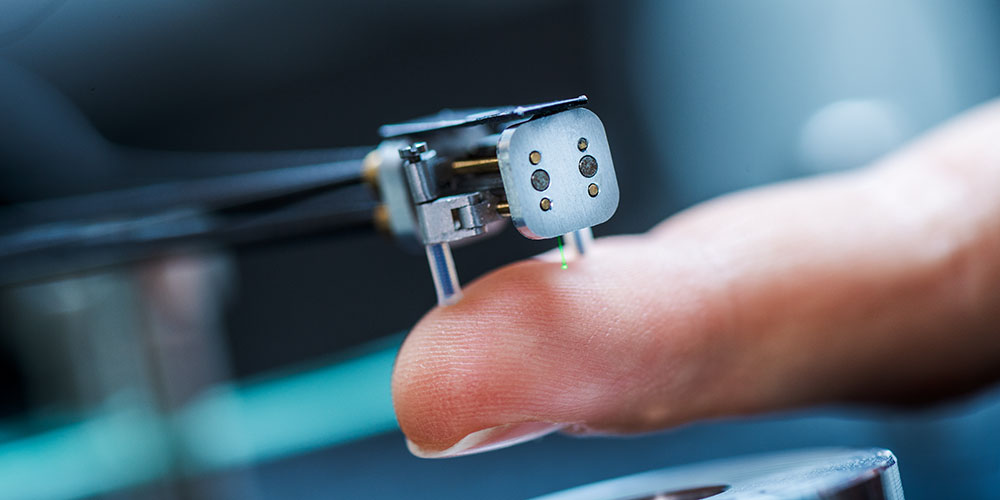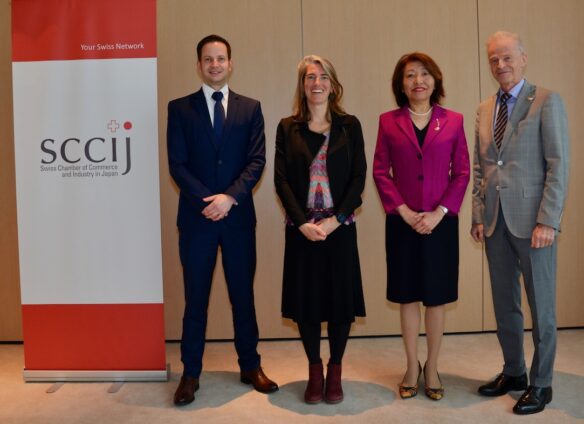Tokyo (SCCIJ) – Researchers at the University of Basel are developing visionary technology for the use of robots in surgery. Recently, the Werner Siemens Foundation has invested an additional 12 million Swiss francs in the Miracle project.

One of the results of the first funding phase: a high-precision robot endoscope tip with integrated laser bone saw (© Werner Siemens Foundation, F. Brüderli).
Robotic surgery as goal
The researchers in Basel have a vision: an individually configurable robot revolutionizes surgical procedures and provides numerous benefits for patients. They have already taken the first steps in this direction. To further implement their vision, the Werner Siemens Foundation has extended the total funding for the “Miracle” project to a total of CHF 27 million.
Planning an operation in virtual reality, cutting a bone with high precision using an intelligent laser saw and using 3D-printed organic implants such as a new knee joint in a minimally invasive surgical procedure: The team of the “Miracle” (Minimally Invasive Robot-Assisted Computer-guided LaserosteotomE) project transforms surgery by adapting it to meet the needs of individual patients even more precisely.
One large robot system
In the first project phase, the team developed a virtual reality platform for planning surgeries, which is already being used in a hospital. “With Miracle, we don’t just want to develop a new technology but rather fully transform bone surgery,” explains Professor Hans-Florian Zeilhofer, surgeon and delegate for innovation at the University of Basel.
The robot-supported endoscope developed in this project phase will be supplemented with additional specialized endoscopes and coordinated with all the other devices in an operating room. To achieve optimal performance, the robot arms, the operation lamps and the operating table will be combined into one large robot system.
Intelligent organic implants
The second phase now involves combining the individual systems into a modular robot, which can be individually configured for the planned surgical procedure and already includes the operating table and lamps. The surgeons can monitor this system during the procedure via a console.
Three-dimensional imaging technology aims to identify defective tissue, measure it in 3D, and determine the structure of corresponding patient-specific implants. They will then be grown in bioreactors or created using robot-supported organic printing technology outside and inside the body through a 3D printing process.
No surgeon replacement
“A lot of the surgical procedures we can plan on the computer are not yet possible using currently available tools,” says Florian M. Thieringer, oral and maxillofacial surgeon, who is co-directing “Miracle II” and also heads the 3D print lab at the University Hospital of Basel. “We are currently developing the technology for implementation in the operating room.”
The idea that surgeons like himself will one day be fully replaced by the robots he is helping to create does not worry him. The reason is simple and convincing: The exact planning and strategic decisions on procedures will remain the domain of medical specialists.
Text: SCCIJ with material of University of Basel





























